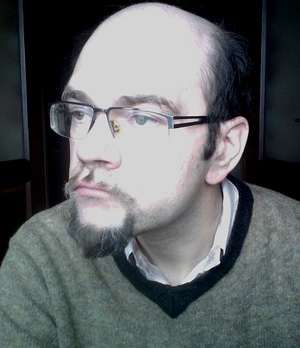 |
24 апреля в 13.30 состоится очередное заседание кельто-анатолийского семинара при секторе анатолийских и кельтских языков Института языкознания РАН (руководитель семинара — к.ф.н. А. В. Сидельцев). С докладом «When Left is Right. Постглагольная левая периферия в хеттском языке» выступит Андрей Владимирович Сидельцев. |
Место проведения семинара: Институт языкознания РАН, Б. Кисловский пер., д. 1, конференц-зал (2 этаж, к. 24) или комната 33 (в зависимости от количества участников). Приглашаются все желающие.
Аннотация
Доклад рассматривает структуру хеттского предложения, в особенности позицию левой периферии (фокус, вопросительные слова, относительные местоимения, подчинительные союзы) в предложении на типологическом фоне других языков с базовым порядком слов SOV, в первую очередь осетинского и грузинского.
Hittite (extinct language of the Anatolian branch of the IE family) attests exceptional clause architecture for a SOV language. The main peculiarity is the left periphery linear position in the clause.
Left periphery (focus, wh-words, subordinators, relative pronouns) is cross-linguistically commonly positioned at the clause’s left edge. However, in SOV languages left periphery constituents are frequently preverbal (Kim 1988; Büring 2009; van der Wal 2012; Erschler 2012; Dryer 2013), hence the name ‘preverbal left periphery’ (Ljutikova, Tatevosov 2009; Erschler 2012).
Hittite attests the constituents typically associated with the left periphery in three positions – clause initially, preverbally and postverbally. It is noteworthy that only part of the preverbal left periphery can be postverbal – namely wh-words, subordinators, relative pronouns, but not focus. This postverbal position of part of left peripheral constituents has not to my knowledge been described for an SOV language.
This feature is closely tied in with constraints on non-canonical word orders: only V-S-O, V‑wh/Neg/Rel, S-O-V-wh/Neg/Rel are attested in Hittite, but not *V-wh/Neg/Rel-S-O or *wh/Neg/Rel-V-S-O. Against the background of better studied SOV languages with very similar preverbal left periphery (Ossetic and Georgian) the data can most straightforwardly be captured by the tree [ForceP[TopP[FocP[FinP[NegP[TP[vP[VP]]]]]]]] where FinP and NegP host clause internal left periphery. The non-canonical word orders will result from two distinct fronting strategies: V-to-Force0 head movement (if Fin0 and Neg0 are not overtly filled) and TP-to-TopP/FocP scrambling. The TP scrambling is actually an effect of obligatory DP scrambling out of vP to TopP/FocP. It appears when the DP pied-pipes the entire TP, just like in Chinese and Hungarian (Cheung 2009 with ref.).
However, Hittite verbs form a larger cluster with preverbs. Preverbs target the same positions as verbs, so they move past complimentizers which are heads of FinP. This implies that preverbs are XPs. But preverbs block verb movement which can be only understood if preverbs are heads of PrvP dominating VP. So Hittite preverbs are similar to verbal modifiers in Hungarian which can behave either as phrases or as heads (Olsvay 2004). The problematic behaviour of Hittite preverbs can be explained by positing that subordinators in Hittite can be both specifiers and heads (cf. Erschler 2012: 683). The argument is based on totally identical syntactic behavior of wh-words, relative pronouns, indefinite pronouns and subordinators which form one common morphosyntactic class.
If a unified assessment of both verb and preverb movement is sought, verb/preverb non-canonical positions can only result from verb/preverb head-movement to heads of functional projections within the ForceP layer, Top0/Foc0, if the verb/preverb has + interpretable topic or + focus features to check – interpretable topic or focus feature of a syntactic head. Both raising strategies are parts of the same larger strategy and are optional (in the sense that at least topical and informational focus verbs can stay in situ), just like verb raising within VP shell in Georgian and as different from the other verb raising strategy in Hittite – long head movement to Force0.

